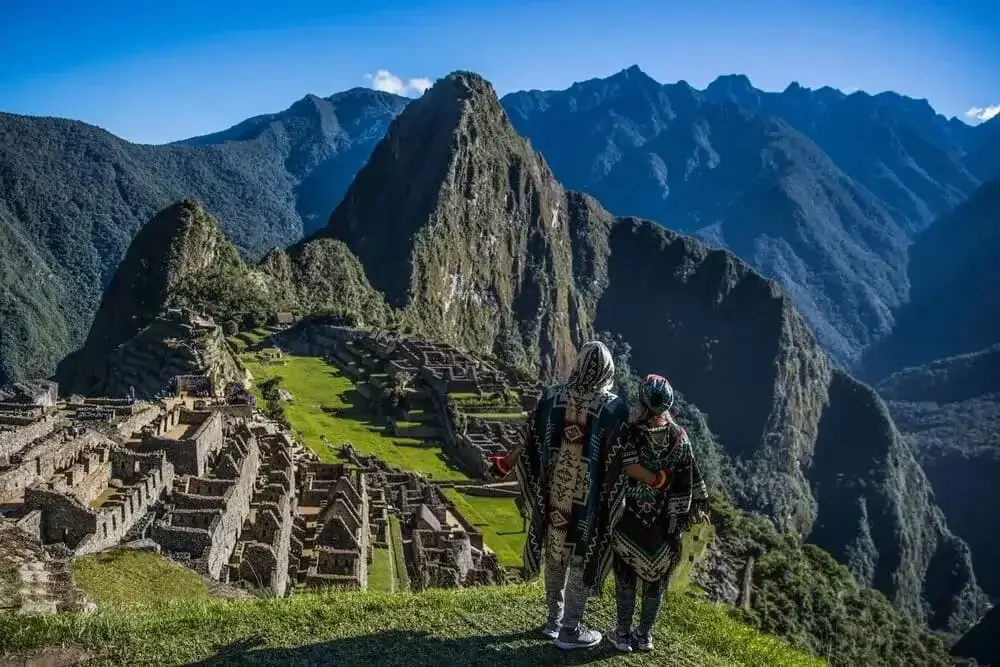Imagine an empire that stretched across towering Andean mountains, deep valleys, deserts, and jungles without horses, wheels, or a written language. Yet the Inca Empire governed efficiently thanks to an extraordinary communication system powered by elite runners known as the chasquis.
These highly trained messengers sprinted across the Qhapaq Ñan, the vast Inca road network, delivering messages, goods, and vital information across Tahuantinsuyo (modern-day Peru, Bolivia, Ecuador, and beyond). In this guide, you’ll discover who the chasquis were, how they used khipus to transmit information, and why they were essential to one of the most advanced civilizations in ancient history.
1. What Were the Chasquis?
The chasquis were highly trained messengers of the Inca Empire, tasked with running long distances to deliver messages, goods, and official orders. Operating across the vast road network known as the Qhapaq Ñan, the chasquis ensured that the emperor, or Sapa Inca, could govern effectively, even in remote regions.
The word chasqui comes from the Quechua language and refers to "one who delivers or passes something on," symbolizing their role in communication and transportation. Thanks to the chasquis, the flow of messages between the capital city of Cusco and every corner of Tahuantinsuyo was constant and reliable.
Explore the Inca Heritage: 15 Fascinating Facts about the Inca Civilization
2. What Was the Qhapaq Ñan?
The Qhapaq Ñan, or "Royal Road," was a large network of roads that stretched over 40,000 kilometers (25,000 miles). The Inca improved on paths built by earlier cultures, turning them into a smart and connected system. This road network linked different regions of the Inca Empire. Built with stone paths, suspension bridges, and stairways carved into rock, the Qhapaq Ñan made it easier to trade, communicate, and move troops.
Along the Qhapaq Ñan, there were resting points called tambos or chaskiwasi—small houses placed at specific distances. At each tambo, the next chasqui would be waiting to run the next segment of the relay. These tambos helped keep the messages flowing smoothly across the empire. They also provided a place for troops and brigades of workers to rest, offering food, water, and shelter. The tambos were important for keeping the chasquis strong and efficient, allowing them to continue their long journeys.
3. What Is a Khipu?
The Inca didn’t have a written language, so they used a unique system called the khipu to keep records. A khipu was made of knotted cords, with each knot representing numbers or information. The color and placement of the knots helped store and share important data like census numbers and trade records. Special experts, known as khipucamayucs, were trained to read the khipus. This system allowed the Inca to manage their empire without written words, making it a key tool for communication and organization.
4. The Chasquis Relay System
The chasquis relay system was a masterpiece of logistical planning. Here’s how it worked:
Starting Point: A chasqui would receive a message, either through a khipu, as a small object, or as a verbal transmission.
The Run: The chasqui would sprint along the Qhapaq Ñan, covering steep mountain paths, plains, or jungle routes. They carried a pututu (a trumpet made of conch shells or horns) to announce their arrival at the next tambo.
Relay at the Tambo: When a chasqui reached a tambo, they would exchange goods, khipus, and verbal messages with the next runner. Precision was essential to ensure messages were delivered accurately. After the exchange, the next chasqui continued the journey.
Final Destination: Messages reached their intended recipients quickly, allowing for efficient administration and coordination across the empire.
By using this relay system, the chasquis could cover up to 240 kilometers (150 miles) per day—an incredible feat given the rugged Andean terrain. This system ensured rapid communication, facilitating governance, trade, and military coordination.
5. Chasqui Outdoor Clothing and Accessories
The chasquis’ outdoor clothing and accessories were specifically designed to help them endure the harsh and varied climates of the Andes. Their attire was both practical and resilient, suitable for long-distance running:
Textiles: Chasquis wore garments made from lightweight, breathable fibers such as llama or alpaca wool. These materials provided insulation against the cold Andean nights while remaining light enough for swift movement.
Sandals (Ojotas): Their footwear consisted of sandals made from leather or other durable materials, ideal for gripping rough terrain and withstanding long distances.
Chuspa: A small bag to carry coca leaves, herbs, kancha (toasted corn), and other provisions. The coca helped them endure fatigue during their travels.
Pututu: A marine conch used to announce their arrival at a tambo.
Qepi: A bundle carried on their back to transport objects and small packages.
Huaraca (Sling): A weapon for defense if needed during their journeys.
The simplicity and functionality of their clothing and accessories allowed the chasquis to travel efficiently across challenging landscapes.
6. Why Were the Chasquis So Important?
The chasquis were the backbone of the Inca Empire’s communication system. Their role was crucial for several reasons:
Governance: They delivered royal decrees and administrative orders, ensuring effective governance across the vast empire.
Military Coordination: The chasquis relayed urgent messages regarding troop movements and conflicts, enabling quick decision-making during times of war.
Trade and Logistics: They transported small goods and important items like medicinal plants, luxury goods, and ceremonial objects.
Without the chasquis, the Inca Empire’s unity and efficiency would not have been possible.
7. The Legacy of the Chasquis Today
The legacy of the chasquis lives on in modern Peru through the remnants of the Qhapaq Ñan (Inca Trail), which is now a UNESCO World Heritage Site. Today, travelers can walk the same paths the chasquis once ran, experiencing the beauty and history of the Andean landscapes firsthand. The chasquis remain a symbol of endurance, connection, and ingenuity.
Many trekking routes, such as the famous Inca Trail to Machu Picchu, give visitors the opportunity to follow in the footsteps of these legendary messengers. Their story continues to inspire admiration for their strength, skill, and the advanced communication system they upheld.
Frequently Asked Questions About the Chasquis
How did the Incas communicate without a written language?
The Incas relied on a sophisticated oral system supported by khipus, knotted cords used to record numerical and administrative information. Messages were memorized and relayed verbally by chasquis, ensuring accuracy across long distances.
How fast could chasquis run?
Using a relay system, chasquis could transmit messages up to 240 kilometers (150 miles) per day, an astonishing speed considering the rugged Andean terrain.
What was the Qhapaq Ñan used for?
The Qhapaq Ñan connected the entire Inca Empire, facilitating communication, trade, military movement, and administration. It remains one of the most impressive ancient road systems in the world.
Did chasquis carry objects or only messages?
Chasquis carried small goods such as ceremonial items, medicinal plants, luxury products, and even fresh fish from the coast to the highlands.
Can you still walk the paths used by the chasquis today?
Yes. Many sections of the Qhapaq Ñan are preserved, including the famous Inca Trail to Machu Picchu, now a UNESCO World Heritage Site and one of the world’s most iconic trekking routes.
The chasquis of the Inca Empire were far more than messengers they were the lifeline of a civilization that thrived across one of the most challenging landscapes on Earth. Through their endurance, precision, and relay system, they connected cities, enabled governance, and sustained the unity of the Inca world.
Today, their legacy lives on along the ancient stone paths of the Qhapaq Ñan, inviting travelers to experience history with every step. Walking these routes is not just a trek it’s a journey into the ingenuity, resilience, and spirit of the Andes.
Ready to follow in the footsteps of the chasquis? Plan your trip now
Discover exclusive cultural and trekking experiences along ancient Inca roads with Andean Travel Experience, where history, comfort, and expert local knowledge come together to create unforgettable journeys through Peru.
Are you ready to follow the trails of the chasquis and discover the wonders of the Inca Empire for yourself? Start your journey today with Andean Travel Experience by exploring the legendary Qhapaq Ñan and experiencing history firsthand.




